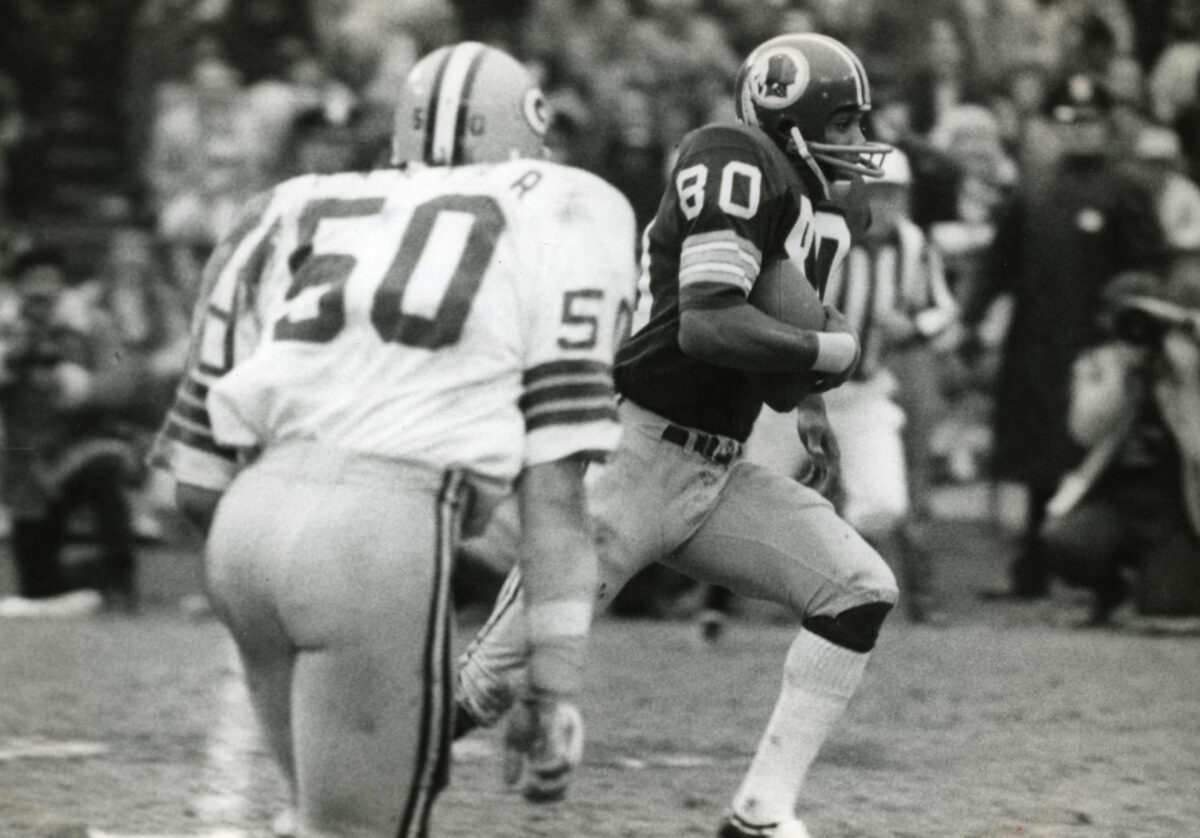[anyclip pubname=”2103″ widgetname=”0016M00002U0B1kQAF_M8036″]
Commanders Wire continues a countdown to the Commanders season opener for 2023 in 80 days. Who was Washington’s best player wearing number 80?
This one needs some comparing of players who competed in different eras. That is always understandably tough to do. This one gets really interesting. Here are some of the best.
Coy Bacon is an often forgotten fierce pass rusher. Bacon came to Washington at age 36, playing his last four NFL seasons for the Redskins. Interestingly enough, Bacon only wore No. 80 for one season (1978) when he achieved an impressive 11.0 sacks.
Virgil Seay was one of the original Smurfs for the Redskins. Seay only stood 5-8, a wide receiver for Washington (1981-84). Catching 43 passes for 792 yards, Seay impressively averaged 18.4 yards a reception those four seasons, also catching 5 touchdown passes.
Stephen Alexander was a promising tight end. The former Oklahoma Sooner was drafted 48th overall in 1998. By the 2000 season he was selected to the Pro Bowl, catching 47 passes (33 first downs) for 510 yards. But after a disappointing 2001 season (injured), Alexander signed with the Chargers as an unrestricted free agent.
Laveranues Coles only played in Washington two seasons (2003-04). Many don’t realize Coles caught 82 and 90 passes those two seasons for 1,204 yards and 950 yards, averaging 14.7 yards and 10.6 yards a reception. Coles was Pro Bowler in 2003, then traded to the Jets for Santana Moss.
Jamison Crowder in his four seasons (2015-18) in Washington caught 221 passes (121 for first downs) for 2,628 yards averaging 11.9 yards a reception, scoring 14 touchdowns. Crowder also returned a punt for a touchdown in 2016.
Roy Jefferson was traded to Washington in 1971 by George Allen at the age of 28. Jefferson played the next six seasons (1971-77) for Washington. He was a Pro Bowler (1971) leading the team in receptions with 47 for 701 yards, 14.9 yards per reception.
The Redskins have made it 14-0 on a 36-yard touchdown pass from Sonny Jurgensen to Roy Jefferson! pic.twitter.com/d1MsW7ekAL
— The NFL in 1972 (@NFL50YearsAgo) October 8, 2022
Those Washington teams under Allen were very much run-oriented, so that must be considered heavily as NFL teams throw much more today. Jefferson scored the only touchdown in the 1972 playoff 16-3 win over the Packers.
In his six seasons for Washington, Jefferson caught 208 receptions for 3,119 yards averaging 15.0 yards per reception along with 16 receiving touchdowns.
Ivan Lambert is a long-time Washington football fan, having memories dating back to the 1969 season. You can follow Ivan’s coverage of the Commanders @IvanLambert18 and Commanders Wire coverage @Washington_Wire.

